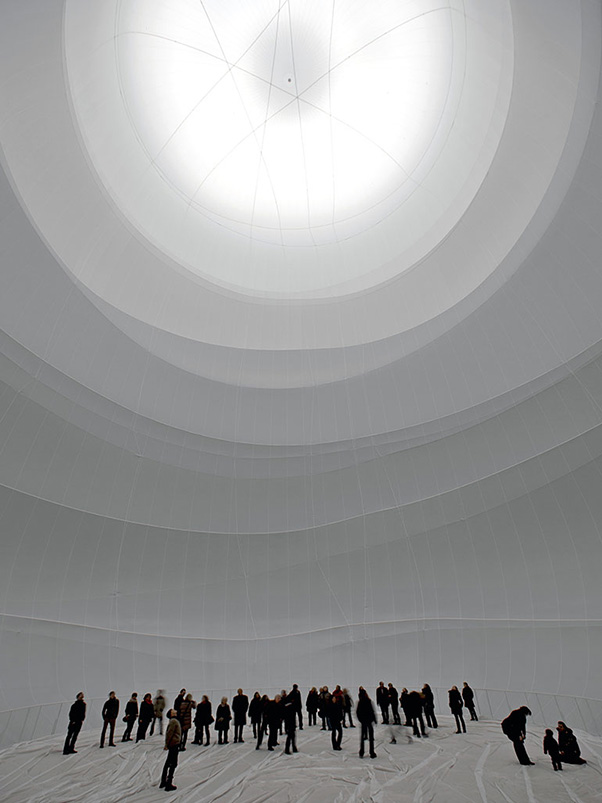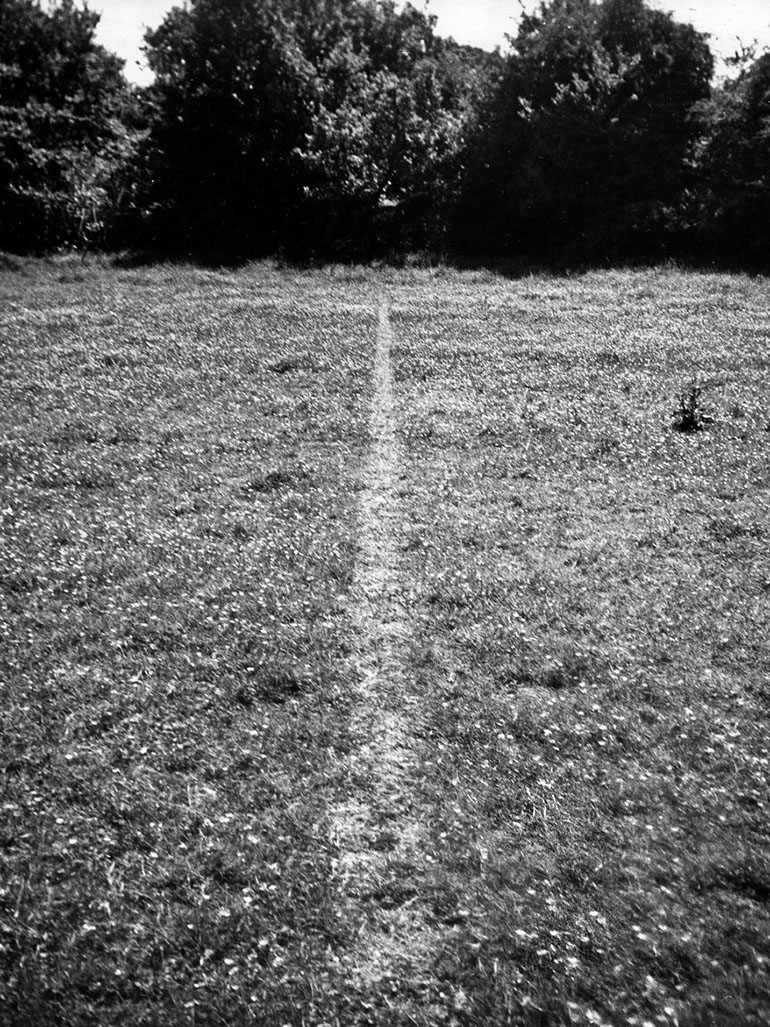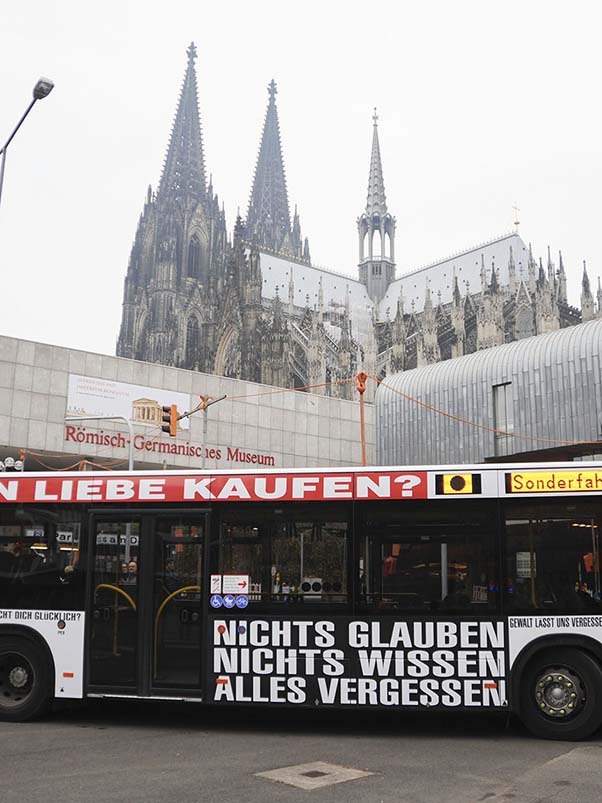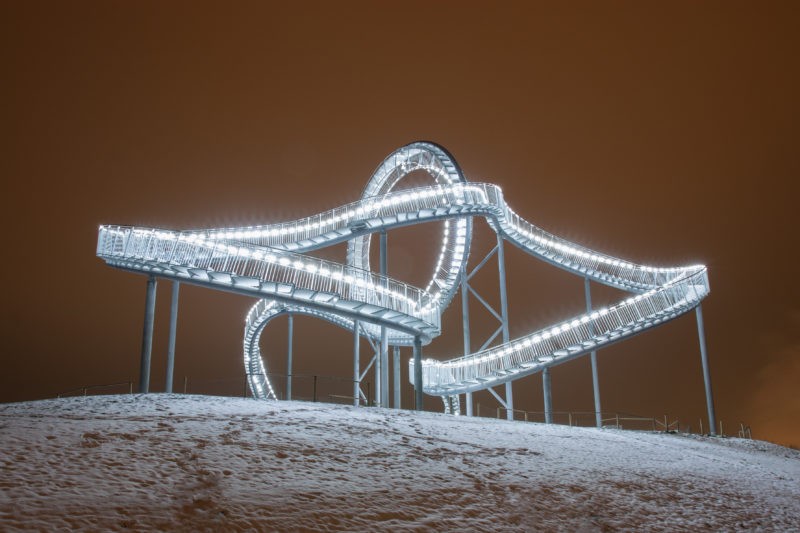
Ehinger Str. 141, 47249 Duisburg Copy to clipboard
51.375619, 6.737942 Copy to clipboard
Before you go
Attire: Wear comfortable shoes for walking uphill, and dress warmly if visiting at night. Bring a flashlight, as the paths leading to the sculpture are not lit after dark.
Nearby attractions: Enjoy panoramic views of the industrial Ruhr area and plan a picnic, though there are no tables available. Check out other landmarks in Duisburg for a full day trip.
Photography: Sunsets and nighttime are ideal for capturing the illuminated structure. The spacious area allows for creative angles.
Safety: The area is generally safe, but unlit paths at night can feel isolated. Stay on the designated trails, and avoid exploring off the main paths.
Best visit time
Tiger & Turtle is stunning at any time of day but especially magical at night when illuminated by approximately 880 LEDs.
Sunset visits offer excellent photo opportunities, with fewer crowds on weekday mornings or early evenings.
Be aware that the surrounding paths are unlit after dark, so bring a flashlight for safety.
Directions
By car
Details: Drive to the official parking lot located near Ehinger Straße. From there, it is a 10–15 minute (800-meter) walk uphill to the sculpture. For closer access, park in the residential area at Berzeliusstraße, but note this is not official parking.
By public transport
Details: Take the S-Bahn to the 'Tiger + Turtle' stop. From there, follow the paved pathway leading up the hill to the sculpture.
Parking
Details: Free parking is available near Ehinger Straße, though spaces may fill quickly on weekends or during peak hours. Residential parking at Berzeliusstraße is a bit closer but limited.
What is it?
The locals call this sculpture the world’s slowest roller coaster, but the most fitting name will be stroller coaster. It gives visitors the pleasure of a fairground ride without the speed usually characterized by roller coaster rides. However, the official name is the Tiger and Turtle – Magic Mountain.
This interactive installation-turned-landmark by Ulrich Genth and Heike Mutter is located in the industrial region of Ruhr, Germany. The Tiger and Turtle – Magic Mountain was ranked in 2013 as #6 Most Extreme Staircases by HuffPost.
Not a real roller coaster
Built in 2011, it stands at 21 meters tall. The installation resembles a traditional roller coaster. From a distance, the shiny spirals draw the viewer in, promising twists, turns, speed, and excitement, until you arrive and stand beneath the metal rings with 246 steps.
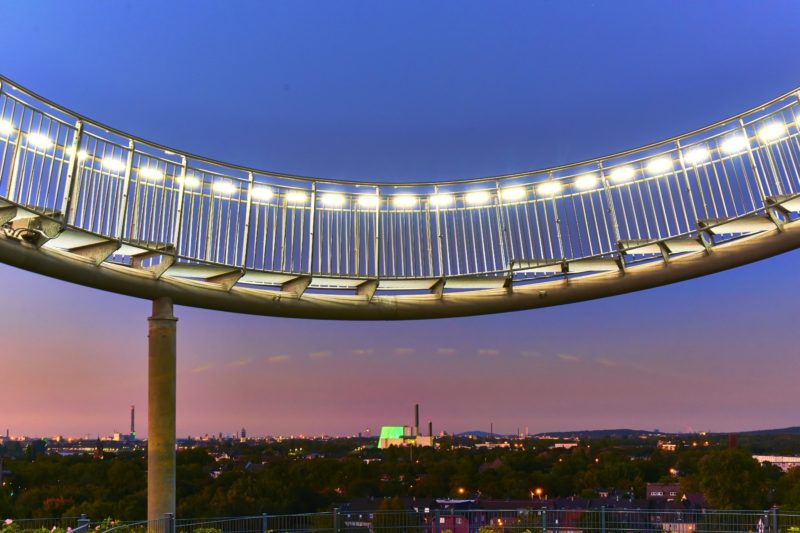
The vertical loop continues the walkway and stairs, though it is impossible to walk the construction; Tiger and Turtle can’t be used as a roller coaster. No one can walk up upside down steps. It is simply a walkway with stairs with no moving parts. It resembles a roller coaster in nearly all manners except that the audience cannot ride the loop. Instead, they can just walk.
Everyone is allowed and free to explore the sculpture at their own pace, day or night. In the dark, 800 LED lights installed in the handrails illuminate the sculpture, making it resemble a curly-wurly beacon.
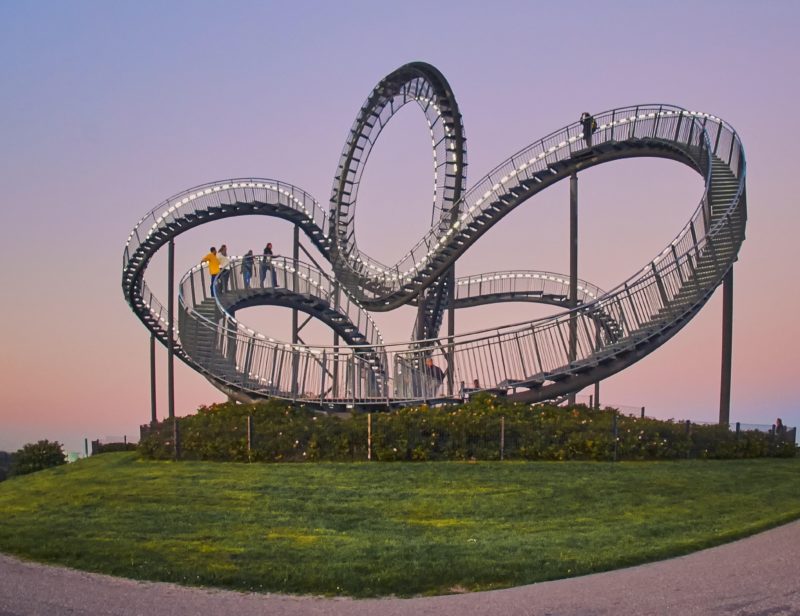
The idea behind it
A roller coaster for pedestrians; that is the main idea behind the design of Tiger and Turtle. The first impression of this gigantic structure is a fast roller coaster, but when you come closer, you realize it is just a motionless spectacle.
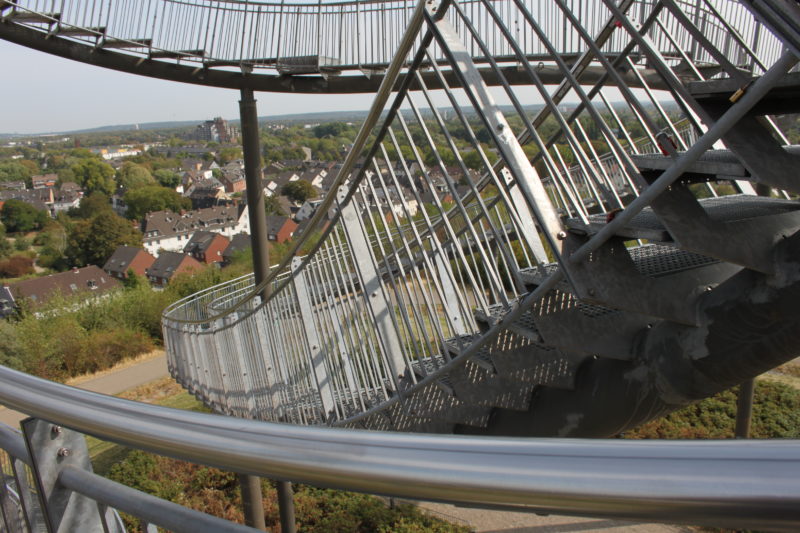
Tiger and Turtle is the slowest roller coaster in the world, according to the local chaperon Frank Switala. It was supposed to be ready for the 2010 European Capital of Culture festivals but befittingly, was behind with its arrival. According to Mr. Switala, the sculpture was built as a protest against the speed with which modern society lives.
We are living in a fast time today. Everything is changing so fast and very often people go on courses or to monasteries just to slow down. This is a place you can go and enjoy walking around.
For so many years, Tiger and Turtle has been a symbolic transformation of the place that served as an industrial town.

How it was made
The piece is made of galvanized steel and cost two million Euros. The main construction of this frequently changing three-dimensional contour of the structure was bent by the company Kersten Europe. The huge thick-walled tubes were cut into length with welding edge preparation.
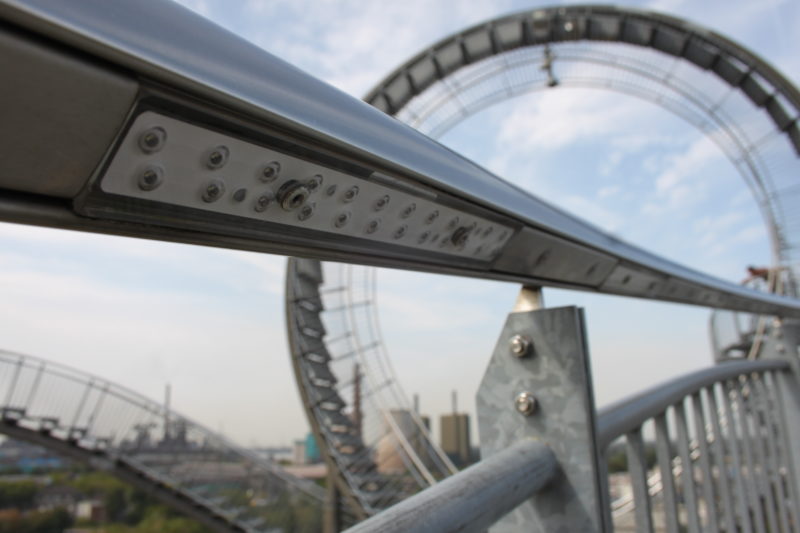
The pieces were then welded together to parts of about 12,750mm with conical side to side links on one end of the tubes. Each tube has a hole and lid in place of power cables. Additionally, each tube has a connection to each other.
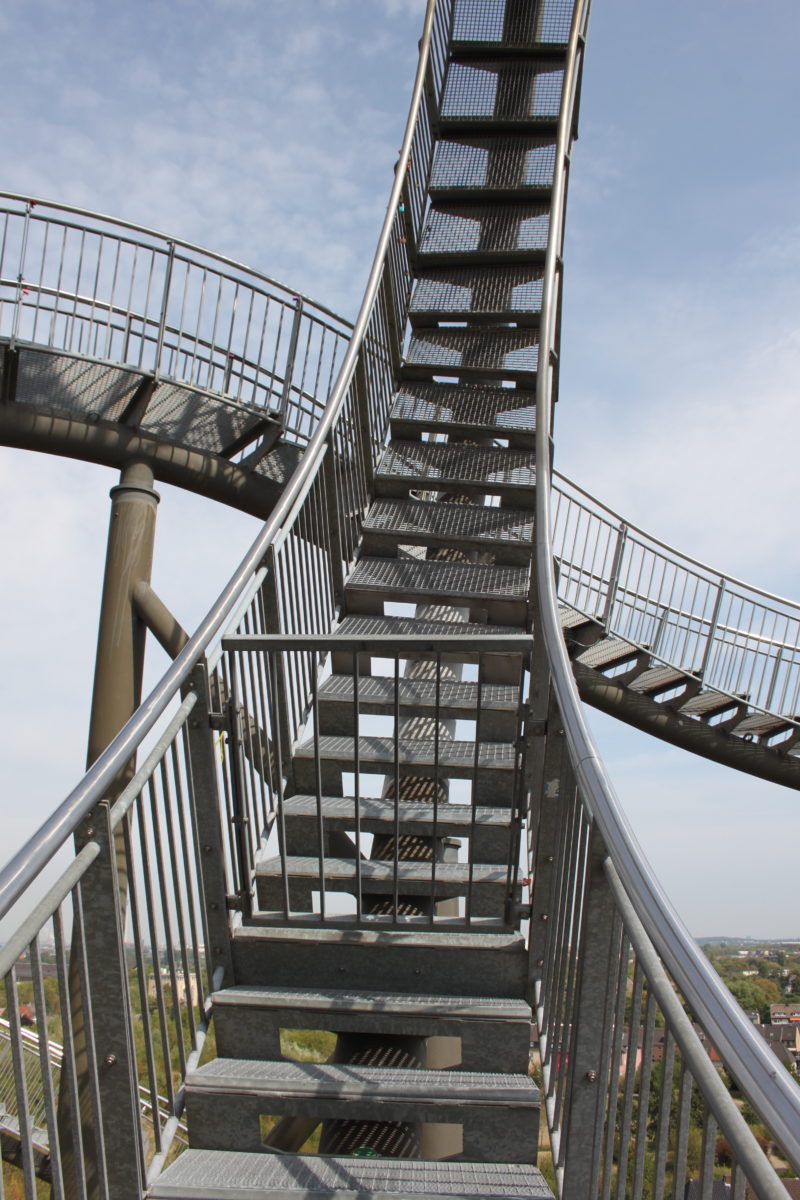
How do visitors feel
Anyone can enter the sculpture and walk, run, race each other, with full understanding that they cannot loop the loop of the structure. The 200 meters and 249 stairs from one end to the other provide some sense of perspective. As once take on the steps to the summit, they begin to feel the strain in the legs; and feel a sense of relief when they curve back downwards.
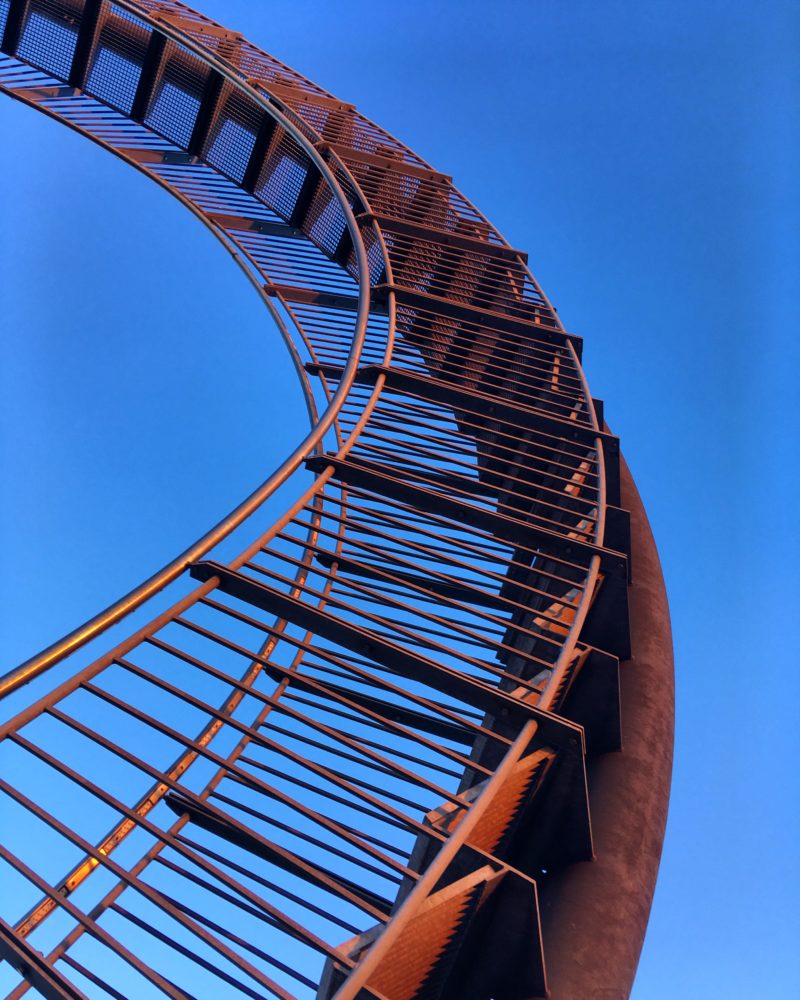
There is no reeling in the stomach due to climbing up the stairs, rather a sense of relief and breathlessness when someone reaches the top of the loop and magnificent vistas of the region’s industrial activities past and present.
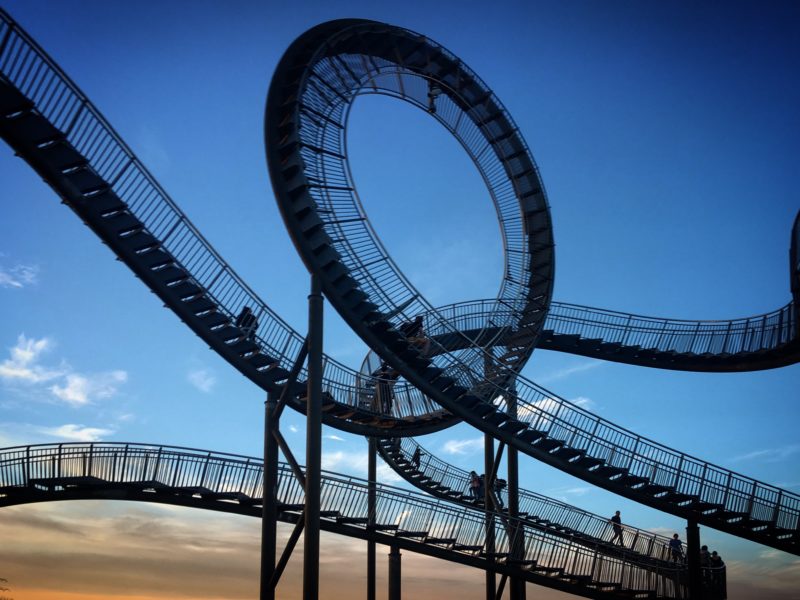
Videos
2 min 56 sec
1 min 15 sec
Location
Ehinger Str. 117, 47249 Duisburg, Germany
Hours: 24/7
Location
Ehinger Str. 117, 47249 Duisburg, Germany
Hours: 24/7
Analysis
Traditional roller coasters are known for the speed, anticipation, adrenaline, and excitement, but none of those are here. At first, the visitors may be disappointed at not having those excitements here.
The audience must climb to the top of the roller coaster on foot via a set of steep stairs. Thus, the sculpture subtly and paradoxically plays with the conflict of promise and dissatisfaction and standstill and mobility.
Later, visitors realize something else that is not in any other roller coaster –slowing down the feeling of creating your own fun, a plodding moment to think about speed and slow, time and life, and change and transformation. You might ponder whether it is the best thing to indulge in the momentarily forgotten rush of the funfair.
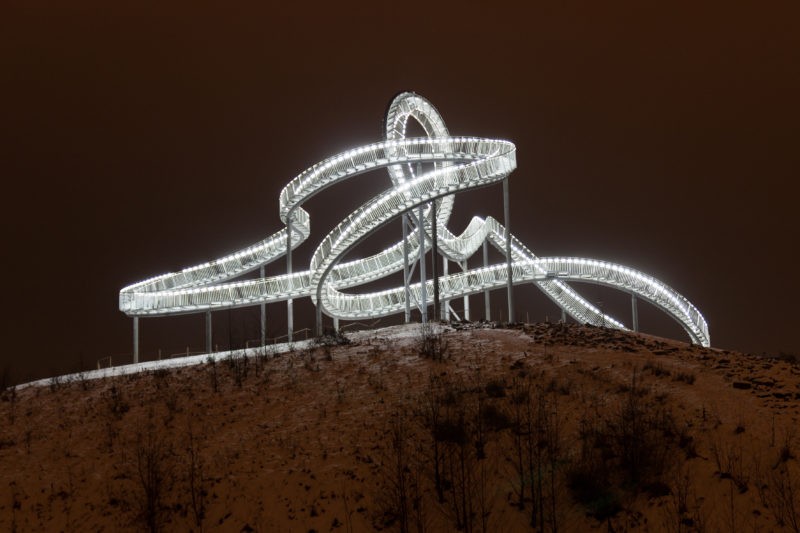
Tiger and Turtle sits on the top of the magic mountain as a powerful contrast, a strange attempt at the reinvention of a roller coaster. This contemporary, precision-engineered sculpture only functions with human energy.
It is an invitation to appreciate something conventional in an unconventional way, to slow down life and experience something that is usually over in a flash at a pace of a turtle.
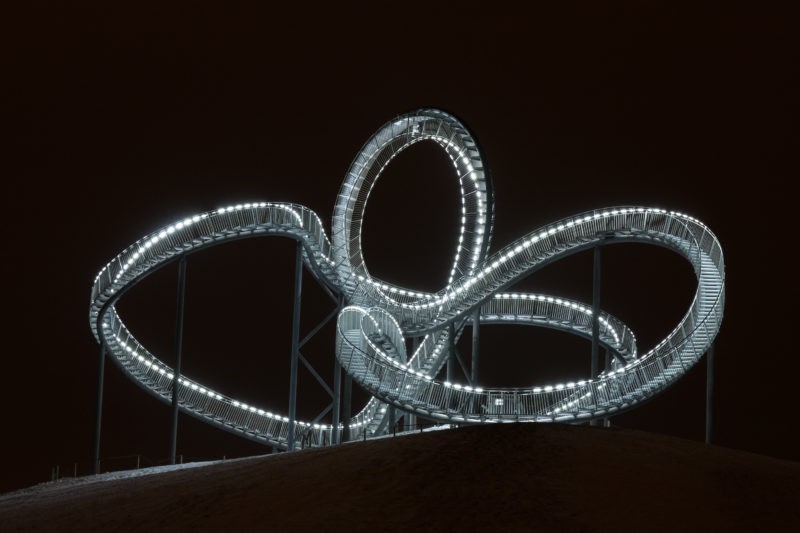
Final words
When one stands beneath Tiger and Turtle, they may begin to envisage the impossible in slow motion.
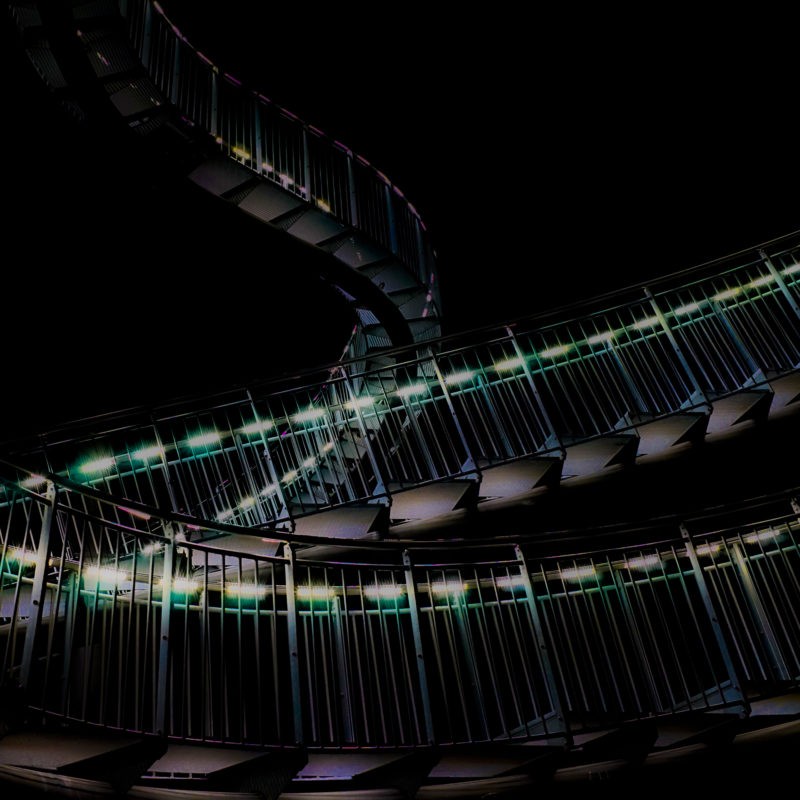
The name of the sculpture, Tiger and Turtle, mirrors the dissimilarity between the speed and acceleration of a roller coaster as well as the relaxing step by step exploration of the environment surrounding the site.
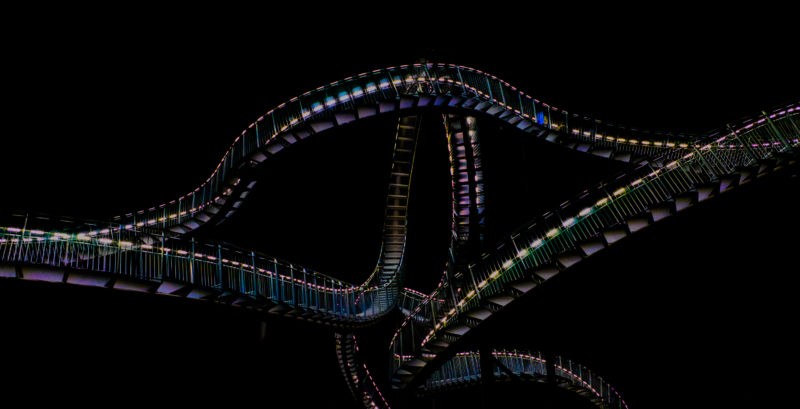
The material used to construct the sculpture, steel and zinc, represents the history of the location as this is where once upon a time, zinc was mined. Krupp Mannesmann, a steel-processing company, was located here as well.
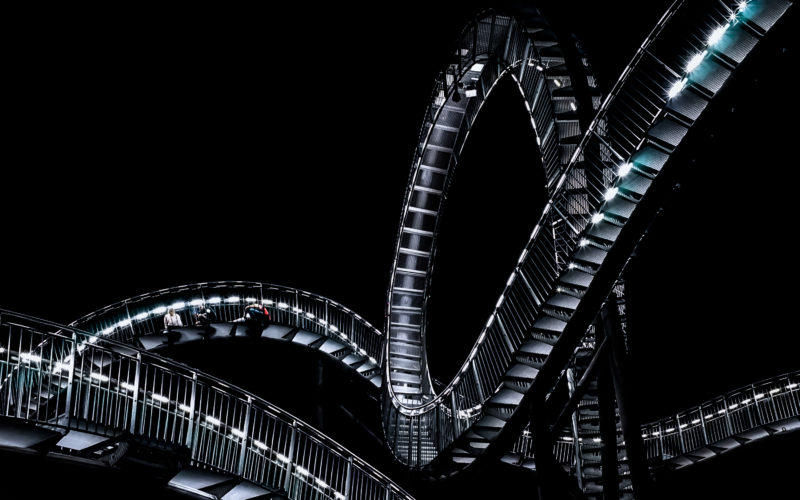
Tiger and Turtle can be enjoyed by everyone, old or young, from up-close or distance. Besides the walk, the sculpture itself is a breathtaking site both during the day and at night.
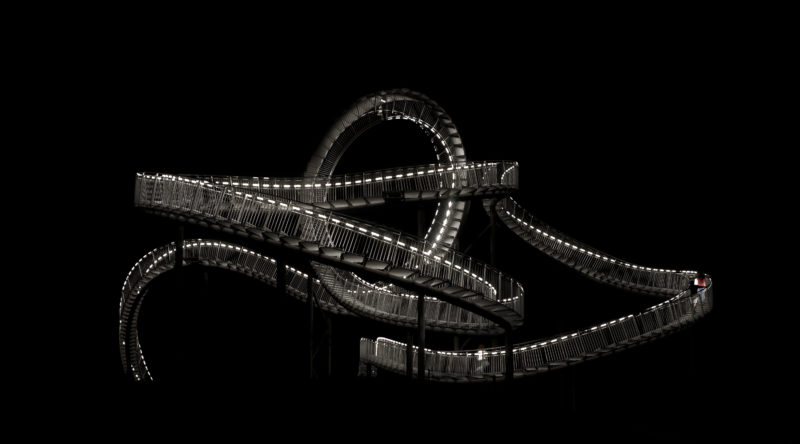
SpaceWalk in South Korea
Designed by German artists Ulrich Genth and Heiki Mutter, the recently opened SpaceWalk in Pohang is the largest walkable art installation in South Korea. The piece was made of 317 tons of steel and cost $9.89 million to construct.
According to Pohang City, the installation is rapidly gaining attention from residents and tourists, as visitors enjoy beautiful sunrises, sunsets, and night views from the roller coaster track-like installation. So far, there have been more than 110,000 visitors since the artwork was inaugurated in November 2021.
Visitors liken the experience to walking on a rollercoaster and since it is installed atop a mountain, they can also enjoy the views of POSCO’s steel plant and Yeongildae Beach. Reservation is not needed to visit the installation, nor is the admission fee.
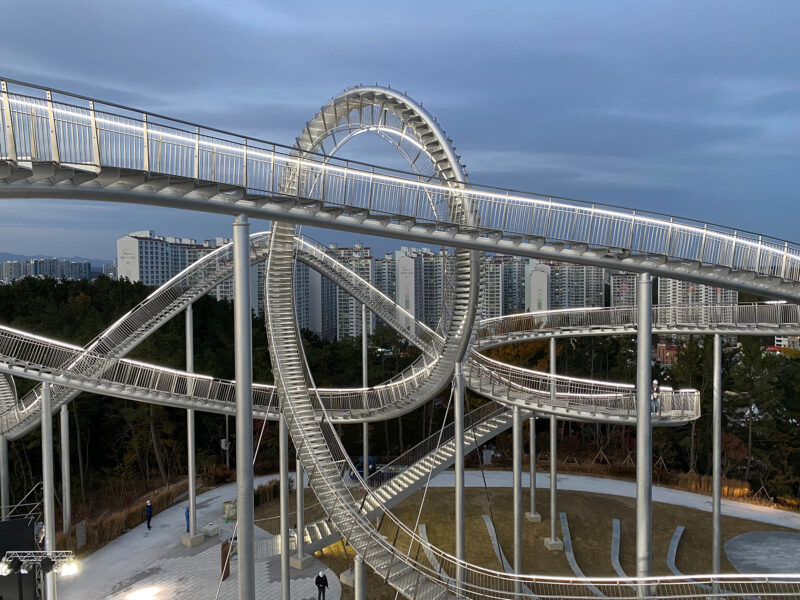
But without the limitations brought about by admission fees and reservations, there was a need for a mechanism on the steel structure to automatically control the number of people on the installation at any given time. SpaceWalk is designed to block access automatically when the number of people on the structure surpasses 150.
This mechanism also blocks access in the event of bad weather, such as strong winds of 30 km/h or more or heavy rainfall. Children below 12 must be accompanied by an adult, while those under 1.1 meters in height are not allowed to enter.
Illuminated at night, the artwork can accommodate up to 250 people at any one time. Visitors can access the structure through a central stair, after which they can choose to climb the track in one of two available directions. In one direction, the winding stairs lead through a gently ascending passage that culminates in a broad curve at 20 meters above the hilltop. From this observation point, visitors can enjoy the view of Pohang and Yeongil Bay.
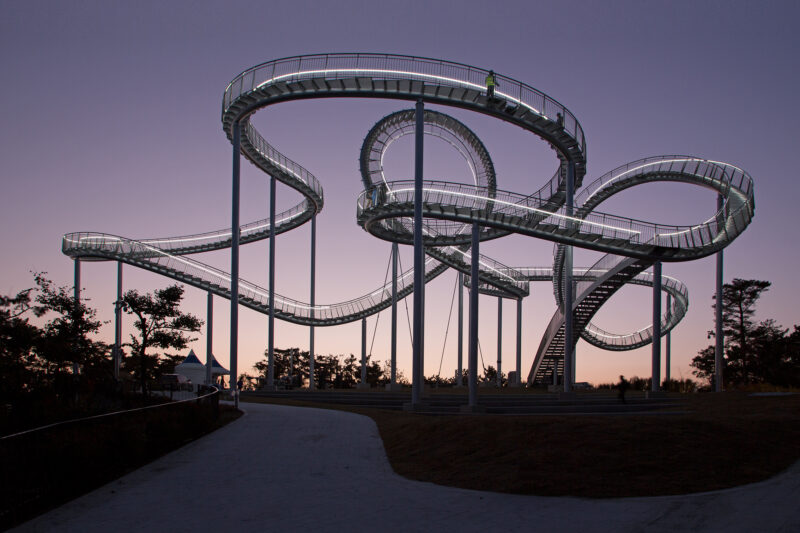
The second option is a little bit steeper and one will traverse a helix that appears circular from a distance. Both of these options feed into a central loop structure that is inaccessible. SpaceWalk looks like a form of drawing emerging against the sky, especially at night, due to the white LED lights – strips and modular – installed in the walkway and handrails to provide integrated illumination.
It is like a long-exposure photograph in which the light of a torch is used as a drawing implement to depict cloud formations and heavenly bodies. The artwork constantly offers new perspectives depending on the viewing location.
SpaceWalk also alludes to the local folklore of the Pohang region and the popular Korean tradition of watching the skies. The name SpaceWalk is borrowed from the terminology of outer space missions that describes the act of exiting the space vehicle in the gravity-free outer space.
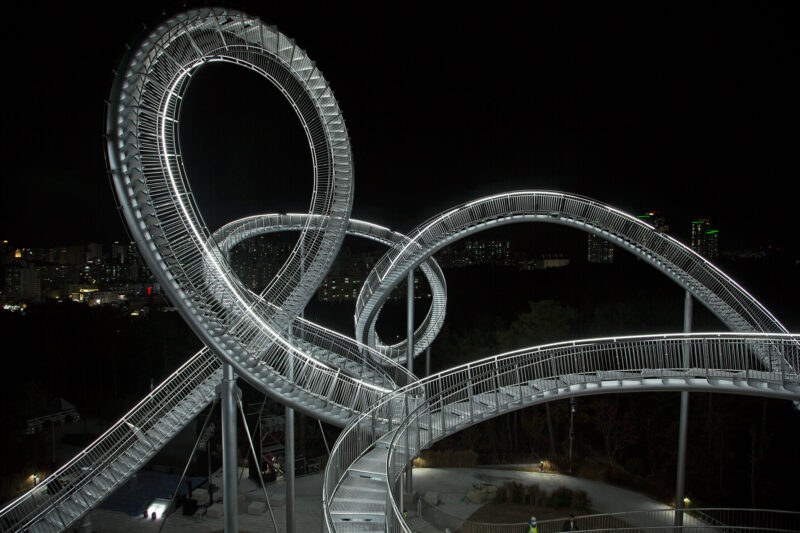
The steel used in the construction of the installation was produced by POSCO and designed to withstand earthquakes of up to magnitude 6.5.
During the unveiling ceremony, POSCO CEO Choi Jeong-Woo said 12: “We hope SpaceWalk, which symbolizes win-win and harmony of POSCO and the city of Pohang, is loved by many and becomes a landmark that represents Korea.”
Explore nearby
Duisburg, Germany
 Christo's Big Air PackageInstallation ended (dismantled in 2010)16 km away
Christo's Big Air PackageInstallation ended (dismantled in 2010)16 km away Richard Long's A line made by walkingPerformance ended (staged in 1967)17 km away
Richard Long's A line made by walkingPerformance ended (staged in 1967)17 km away Tomás Saraceno's In OrbitInstallation ended (dismantled in 2024)18 km away
Tomás Saraceno's In OrbitInstallation ended (dismantled in 2024)18 km away Gerhard Richter's cathedral window51 km away
Gerhard Richter's cathedral window51 km away Barbara Kruger wrapped entire busesInstallation ended (dismantled in 2013)51 km away
Barbara Kruger wrapped entire busesInstallation ended (dismantled in 2013)51 km away
